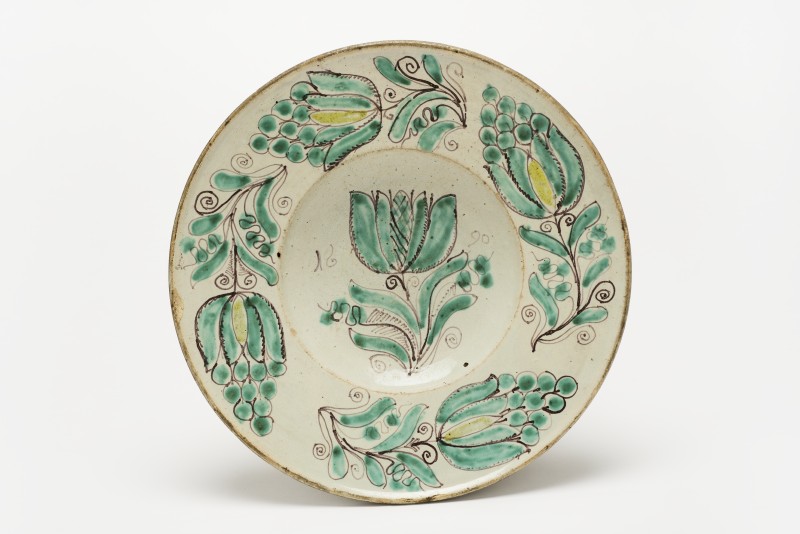Flacher Teller ohne Standring mit in den Anstieg übergehendem Spiegel und fast waagrecht verlaufender breiter Fahne mit leicht aufgewölbtem Lippenrand.
Im Zentrum des Spiegels stilisierte Tulpe mit teilweise volutenförmig eingerollten Blättern bzw. Ranken und der Jahreszahl „1690“. Auf der Fahne vier Granatäpfel mit ebenfalls volutenförmig eingerollten Blättern.
Glasur krakeliert, starker Glasurabrieb im Spiegel und auf der Fahne, Glasurabplatzung am Fahnenrand.
Ohne Marke
Hergestellt in einer Zittauer Fayencemanufaktur.
Ankauf von Richard Seyffarth, Dresden, 1951
en

